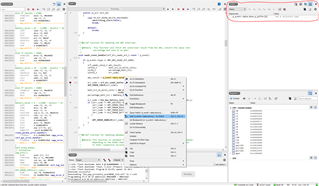Hi everyone,
I have connected a potentiometer to a GPIO pin (AIN2) and would like to show the varying values in the battery service.
I was wondering if there's any way for me to amend the battery service so that the service can read other ADC/voltage value from other GPIO pins.
Tools:
- nRF52832
- nRF52DK
- nRF5_SDK_17.1.0
- 132 softdevice
Thanks,
Zachary



